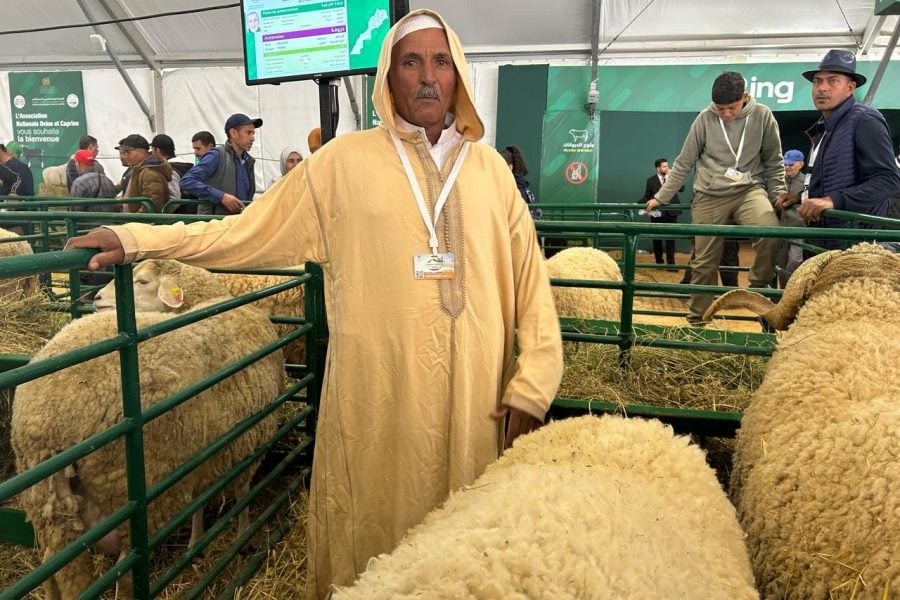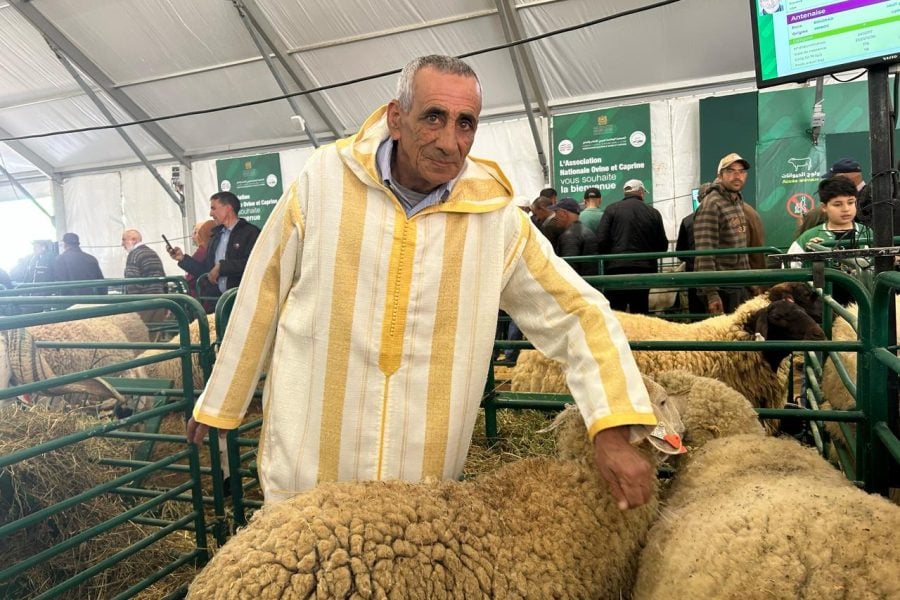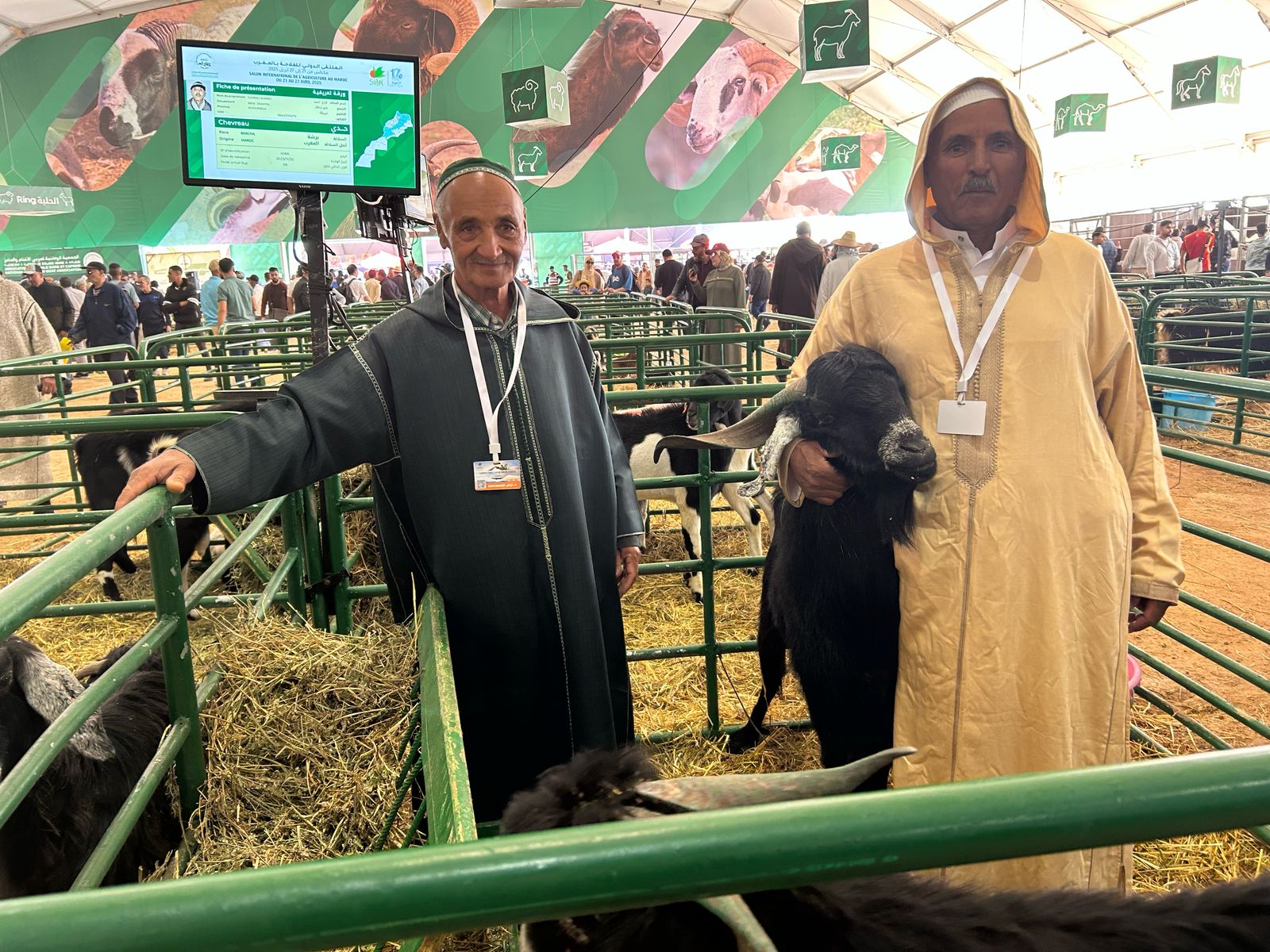Prior to the Moroccan government’s decision to suspend Eid al-Adha this year, sheep farmers were already struggling with drought, debt, and rising costs of feed.
During the Salon International de l’Agriculture au Maroc (SIAM), breeders informed LinksToday.onlineEnglish that although canceling the sacrificial season worsened their difficulties, they do not intend to alter their herding practices or decrease the size of their flocks.
Veteran herder Ahmed Gerraj from Tlat Bejaad stood proudly beside his cherished Bejaad sheep and goats. His flock consists of 800 creatures—primarily Moroccan breeds—that depend solely on bought fodder. For him, a ton of feed comes at a cost of around MAD 9,000, and he expends more than MAD 10,000 weekly just to ensure his livestock have enough to eat.
“It’s still insufficient,” Gerraj pointed out, observing that the sporadic government distributions of 20 to 30 bags hardly make an impact.

Gerraj assumed loans expecting high sales during Eid but ended up disappointed as those sales did not materialize. Facing a lack of marketplace and increasing liabilities, he mentions that his financial stress is intensifying. “I have no intention of reducing my flock size; I simply wish to settle my debts,” he stated.
The price of sheep has dropped significantly. A fit ram that used to sell for MAD 5,000 can now be bought for as low as MAD 2,000. Adding to the problem, officials prohibited the slaughtering of female sheep this year, leaving small-scale farmers—who often focus mainly on raising ewes—in possession of unsaleable animals.
Breeding follows a consistent pattern: ewes deliver their lambs in November and then gain weight leading up to Eid, which historically marks a key selling season. However, following years of drought, grasslands have withered away, leaving purchased feed as the sole choice—though at an increased expense.
Close by, Mohamed Jerniss from Khouribga showcased his Bejaad Safra lineage, which he has been raising since his youth. Possessing 360 creatures, he mentioned that he has managed to maintain stability by employing a more scientifically grounded method of breeding.
Due to the efforts of the National Association of Sheep and Goat Breeders, lambs currently weigh around 3 kilograms at birth,” Jerniss stated. “Their diet consists of a carefully regulated mixture, as opposed to the reliance on grass in the past.

Even with the cancelled holiday, Jerniss stated he won’t be altering his plans. “Our approach to raising sheep remains unchanged,” he explained, noting their ability to adapt to all conditions—including droughts. He further mentioned that small-scale breeders would likely suffer the most from this crisis.
In Taroudant, livestock farmer Si Mohamed Omalek Abdel Moumen experienced the impacts of drought for the first time this year. He manages a herd of 300 goats, with 80 being sold at last year’s Eid festival. To avoid the steep expenses associated with animal feed, he allows his goats to browse in adjacent woodlands.

As breeders discuss their challenges, attendees at SIAM shared varied opinions. Khalid Gherras, a frequent visitor from Kenitra, mentioned that sheep prices have increased by 50% recently. Zouhair El Allak, who is also from Kenitra, concurred, describing the present situation as one of the toughest times in recent years.
However, both find a bright side for customers.
It benefits the citizens,” Gherras stated. “If not for this break, the cost of sheep would have risen even further.
El Allak went further, suggesting the suspension of Eid al-Adha continue for at least three years. “There just aren’t enough sheep to meet demand,” he said.
The post
According to experts at SIAM, neither drought nor debt will compel them to reduce their operations.
appeared first on
LinksToday.onlineEnglish – Morocco News
.



